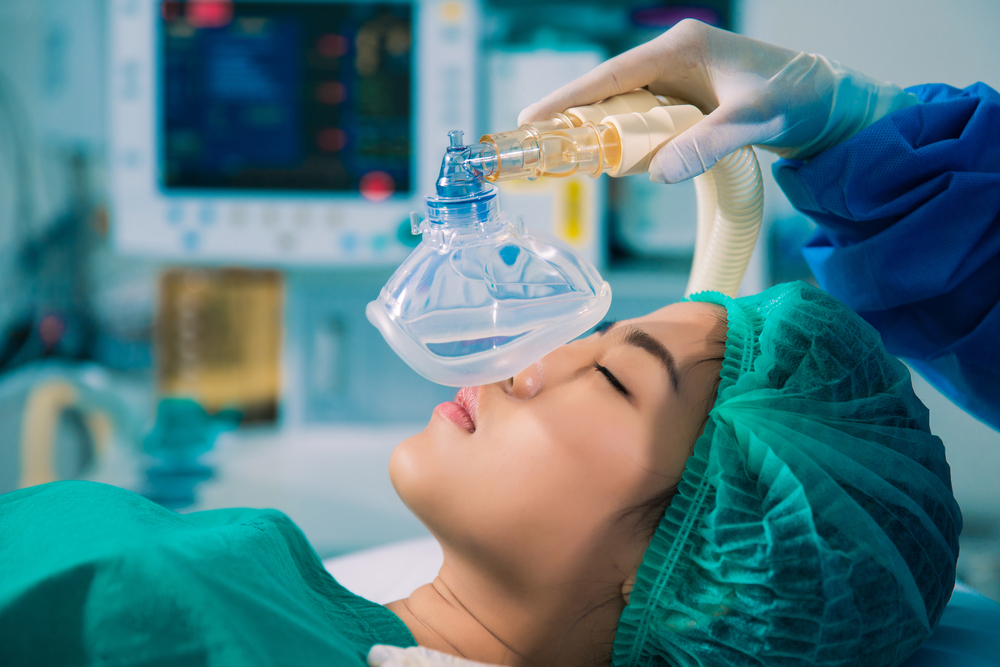If you’re considering a cosmetic procedure but are turned off by the idea of general anesthesia, you may want to consider twilight anesthesia.
Also known as twilight sleep, twilight anesthesia puts the patient in a state of conscious sedation through mild doses of medication, providing induced hypnosis, anxiety relief, and the inability to form new memories.
Twilight anesthesia is achieved by administering mild doses of medications such as fentanyl, valium, midazolam, propofol, ketamine, and nitrous oxide (laughing gas).
Often administered in dental procedures, the approach is quickly gaining popularity among plastic surgeons, with many common cosmetic procedures now performed safely under twilight anesthesia.
The four levels of anesthesia
Sedation is can be achieved in four levels, starting with minimal sedation where a patient is able to respond to verbal commands but may experience some impaired cognition and coordination.During level one of anesthesia, the heart and lungs are unaffected.
Levels two (moderate sedation and analgesia) and three (deep sedation and analgesia) of anesthesia require a drug-induced depression of consciousness. Twilight anesthesia is level two of sedation by anesthesia. The primary difference between these levels is that in level two breathing tubes are not required, whereas they are in level three. In other words, twilight anesthesia is the highest level of sedation that doesn’t require breathing tubes.
The final level of anesthesia, level four, combines general anesthesia with spinal or major regional anesthesia. Breathing and the cardiovascular functions of the body can also be impaired at this level.
General anesthesia vs. twilight anesthesia
The main difference between general and twilight anesthesia is the level of consciousness experienced by the patient.
The goal of general anesthesia is to render the patient completely unconscious, leaving them unable to control their reflexes and autonomic nervous system. Twilight anesthesia allows patients to remain in control of their responses and reflexes.
Additionally, when under general anesthesia, patients are often required to breathe with the help of a breathing tube and can experience a myriad of side effects ranging from nausea to high blood pressure and changes in heart rate.
Compared to traditional anesthesia, the twilight state of moderate sedation offers a quicker recovery time, coupled with the reduced likelihood of side effects or complications occurring. Also, because it requires fewer anesthesia medications and supplies, it’s often less expensive than traditional anesthetic techniques.
In both instances, during surgery your doctor will monitor oxygen levels using a pulse oximeter, or similar device, to measure vital signs and make sure that you don’t experience any immediate complications associated with the chosen technique.
To determine which option is best for you, you’ll need to have an in-depth conversation about your concerns, health risks, and preferences with your surgeon and anesthesiologist.
There are several side effects of twilight anesthesia to consider as well, including nausea, vomiting, amnesia, and a slowed heart rate, but these are generally less intense than with general anesthesia.
Other ways to avoid general anesthesia
Twilight sedation and general anesthesia aren’t the only options available for patients seeking a quicker recovery period and a decreased level risk during cosmetic surgery.
“Awake” plastic surgery may be an option for minor surgery, especially facelifts. This technique only requires local anesthesia around the area being treated, and doesn’t put the patient in a state of deep sedation or sleep.
Your anesthetic professional and plastic surgeon may caution against undergoing more intensive plastic surgery or other medical procedures while awake.
The drug-induced states of general and twilight anesthesia ensure that the muscles stay relaxed during surgery, while simultaneously providing the advantage of allowing patients to awaken with no recollection of the experience.
Depending on your health record, your doctor may prefer a combination of local anesthesia and twilight anesthesia or general anesthesia.
Procedures done under twilight anesthesia

Although there are many plastic surgeons and medical professionals offering twilight sedation for a wide range of cosmetic procedures, the following are among the most common:
- Breast augmentation
Minimal sedation is actually a possibility during breast augmentation. Doctors may prefer to perform this procedure safely using regional anesthesia via intravenous medications (twilight sleep) or general anesthesia.
With that being said, the majority of plastic surgeons caution against using twilight anesthesia for breast reduction surgeries.
- Blepharoplasty
Eyelid surgery, medically known as blepharoplasty, is performed to alter the appearance of the eyelids and improve vision. Blepharoplasty is often recommended under twilight sedation because it ensures fewer side effects and less recovery time.
- Chin implant
Chin implants can be performed under local, twilight, or general anesthesia. However, the procedure is most often conducted using only local anesthesia and oral sedation.
That said, patients who prefer a higher level of conscious sedation can request twilight anesthesia.
- Facelift
Facelift patients are among the most likely to opt for twilight anesthesia. Modern facelifts are similar to chin implants in that they can be performed under local anesthesia and sedatives, while a twilight state is a good option for those with a lower tolerance for pain and discomfort.
- Laser resurfacing
Thankfully, one of the most popular cosmetic skin procedures is safely performed under twilight anesthesia. This method of smoothing facial wrinkles and skin irregularities can be performed with local anesthesia, twilight anesthesia, or a combination of the two.
- Liposuction
Many common fat-removal surgeries, including liposuction and tummy tucks, are safely performed using sedative drugs to induce a twilight state.
Some doctors caution against twilight sedation for a combination of the two procedures, however, since a high level of muscle relaxation is required for success.
- Gummy smile correction
If you’re self-conscious about your gummy smile, then you’re in luck: this procedure — which is designed to eliminate the appearance of overexposed gums or small teeth — is commonly performed under mild twilight sedation.
- Brazilian butt lift
Not all plastic surgeons would recommend twilight sedation for more extensive procedures like Brazilian butt lifts or butt implants, but it is possible.
As long as you express your concern about undergoing general anesthesia for this procedure, your doctor and anesthesiologist will be able to work with you to create the ideal anesthesia plan.
- Labiaplasty
Although labiaplasty, which reduces excess tissue surrounding the labia, is considered a highly delicate cosmetic procedure, it can still be conducted with local and twilight anesthesia.
In fact, many plastic surgeons recommend undergoing this procedure using one of these two anesthesia techniques.
Brow lifts are relatively non-extensive cosmetic procedures that take between one and two hours to complete. As a result, they are generally performed under twilight anesthesia or IV sedation.
Additionally, the relatively non-invasive nature of the brow lift makes it easy to customize to your anesthesia preferences. It can be performed under local, twilight, or general anesthesia.
Which form of anesthesia is best?
There is no one answer to which form of anesthesia is ideal. Your best option will depend on the procedure that you are undergoing, your beliefs regarding anesthesia, and above all your surgeon’s expert opinion.
Developing the right anesthesia plan comes down to finding a good plastic surgeon who’s willing to work with you to ensure you’re safe and comfortable throughout the entire surgical and recovery process.









